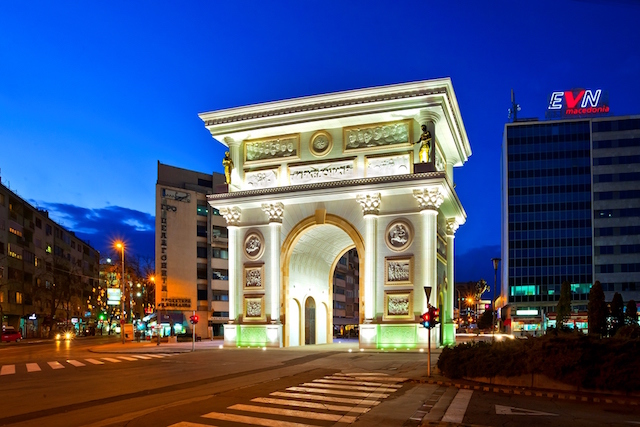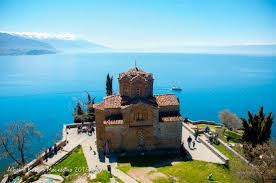Social Activities
Skopje

Skopje is the capital and largest city of the Republic of Macedonia. It is the country's political, cultural, economic, and academic center. It was known in the Roman period under the name Scupi. The territory of Skopje has been inhabited since at least 4000 BC; remains of Neolithic settlements have been found within the old Kale Fortress that overlooks the modern city center. On the eve of the 1st century AD, the settlement was seized by the Romans and became a military camp. When the Roman Empire was divided into eastern and western halves in 395 AD, Scupi came under Byzantine rule from Constantinople. During much of the early medieval period, the town was contested between the Byzantines and the Bulgarian Empire, whose capital it was between 972 and 992. From 1282, the town was part of the Serbian Empire and acted as its capital city from 1346. In 1392, the city was conquered by the Ottomans who called the town Üsküp. The town stayed under Ottoman control over 500 years, serving as the capital of pashasanjak of Üsküb and later the Vilayet of Kosovo. At that time the city was famous for its oriental architecture[citation needed]. In 1912, it was annexed by the Kingdom of Serbia during the Balkan Wars and after the First World War the city became part of the newly formed Kingdom of Serbs, Croats and Slovenes (Kingdom of Yugoslavia). In the Second World War the city was conquered by the Bulgarian Army, which was part of the Axis powers. In 1944, it became the capital city of Democratic Macedonia (later Socialist Republic of Macedonia), which was a federal state, part of Democratic Federal Yugoslavia (later Socialist Federal Republic of Yugoslavia). The city developed rapidly after World War II, but this trend was interrupted in 1963 when it was hit by a disastrous earthquake. In 1991, it became the capital city of an independent Macedonia.
Skopje is located on the upper course of the Vardar River, and is located on a major north-south Balkan route between Belgrade and Athens. It is a center for metal-processing, chemical, timber, textile, leather, and printing industries. Industrial development of the city has been accompanied by development of the trade, logistics, and banking sectors, as well as an emphasis on the fields of transportation, culture and sport. According to the last official count from 2002, Skopje has a population of 506,926 inhabitants; according to two more recent unofficial estimates, the city has a population of 668,518 or 491,000 inhabitants.



Source: https://en.wikipedia.org/wiki/Skopje
Ohrid



The city of the immortal Ohrid is the sublime lakeside point that for many represents the culmination of the Macedonian experience, a kingdom of light and water, a repository of ancient ruins from Macedonia’s earlier kingdoms. Ohrid’s major attractions are all located within a remarkably concentrated and eminently walkable area, among and above the narrow streets of the Old Town lined with restaurants and cafés perfectly suited for relaxing in the cool summer evenings. Ohrid’s many café bars and nightclubs also make for a vibrant nightlife. As for the lake itself, it is so large and so deep that one might mistake it for a small sea. Full range of water sports, fishing andboating is available, and numerous churches alongside Ohrid’s lake shores make for fascinating side trips and walks. The wooded ridge above the lake’s eastern shore is largely taken up by the National Park of Galichica, an unspoiled wilderness ideally suitable for nature enthusiasts. The uniqueness of Lake Ohrid and the city’s historical architecture has been attested by UNESCO, honoring it with an official designation as one of the few places on the cultural institution’s list “World Inheritance”.
Archaeological finds indicate that Ohrid is one of the oldest human settlements in all of Europe. The Lake itself is over three million years old. Ohrid town is first mentioned in Greek documents from 353 B.C, when it was known as Lychnidos or “the city of light.” Only much later in 879 A.D, was it renamed Ohrid. The name probably derives from the Macedonian phrase “Vo Hrid” – roughly meaning “the town on the hill.” Apart from its ancient theater (which is still in use today), the ancient Lychnidos boasted a classical agora, gymnasium, civil basilicas and temples to the Gods of Greek Antiquity. When under Roman rule it developed more of the typical Roman architectural traits, and became an important transit point on the Via Egnatia trade route that bisected the Balkans. The town as we know it today was built mostly between the 7th and the 19th century. During the Byzantine period, Ohrid became a significant cultural and economic center serving as an Episcopal center of the Orthodox Church and as the site of the first Slavic university run by St. Clement and St. Naum at the end of the 9th century. At the beginning of the 11th century, Ohrid briefly became the capital of Macedonia’s greatest medieval ruler, Samuel, whose fortress still presides over the city today. During Ottoman times Ohrid remained the seat of the autocephalous Ohrid archiepiscopacy until 1726. During its Byzantine apogee, the town was renowned for its 365 churches and monasteries. These and a large number of sacral edifices have been preserved and make up a large part of Ohrid’s rich medieval past. Today, one of the city’s museums has a collection of more than 800 Byzantine and post-Byzantine icons, most of which were painted between 11th and 14th century. Art historians consider this collection as one of the most important in the world, along with those of the Tretiakov Gallery in Moscow and Mt. Athos in Greece.
Pristina

Pristina is the capital and largest city of Kosovo. It is the administrative center of the homonymous municipality and district. The city has a majority Albanian population, alongside other smaller communities. With a municipal population of around 200,000 inhabitants, Pristina is the second-largest Albanian-speaking city in the world (after Tirana in Albania). Geographically, it is located in the north-eastern part of Kosovo close to the Goljak mountains. The city is situated some 250 kilometres north-east of Tirana, 90 kilometres north of Skopje, 520 kilometres south of Belgrade and 300 kilometres east of Podgorica. During the Paleolithic Age, what is now the area of Pristina was envolved by the Vinča culture. Pristina was home to several Illyrian and Roman people at the classical times. King Bardyllis brought various tribes together in the area of Pristina in the 4th century BC, establishing the Dardanian Kingdom. The heritage of the classical era is still evident in the city, represented by ancient city of Ulpiana, that was considered one of the most important Roman cities in the Balkan peninsula. In the Middle Ages, Pristina was an important town in Medieval Serbia and also the royal estate of Stefan Milutin, Stefan Uroš III, Stefan Dušan, Stefan Uroš V and Vuk Branković. When the Ottomans conquered the Balkan peninsula, Pristina was considered an important mining and trading center due to its strategic position near the rich mining town of Novo Brdo. The city was known for its trade fairs and items, such as goatskin and goat hair as well as gunpowder. The first mosque in Pristina was built in the late 14th century while under Serbian rule. Pristina has always been considered as a city where tolerance and coexistence in terms of religion and culture has been part of the society in the last centuries.
Being the capital city, Pristina is considered as the heart of Kosovo because of its central location and its importance in finance, commerce, media, entertainment, arts, international trade, education, service, research and healthcare. Almost all domestic and foreign companies, media and scientific institutions have their headquarters in the city.
Source: https://en.wikipedia.org/
Prizren

Prizren is a city and municipality located in the Prizren District of Kosovo. According to the 2011 census, the city of Prizren has 85,119 inhabitants, while the municipality has 177,781 inhabitants. Prizren is a historic city located on the banks of the Prizren Bistrica river, and on the slopes of the Šar Mountains (Albanian: Malet e Sharrit) in the southern part of Kosovo. The municipality has a border with Albania and the Republic of Macedonia. By road the city is 99 kilometres (62 miles) northwest of Skopje, 85 kilometres (53 miles) south of Pristina and 175 kilometres (109 miles) northeast of Tirana.
The municipality of Prizren is still the most culturally and ethnically heterogeneous of Kosovo, retaining communities of Bosniaks, Turks, and Romani in addition to the majority Kosovo Albanian population live in Prizren. Only a small number of Kosovo Serbs remains in Prizren and area, residing in small villages, enclaves, or protected housing complexes.[2] Furthermore, Prizren's Turkish community is socially prominent and influential, and the Turkish language is widely spoken even by non-ethnic Turks.[citation needed]









